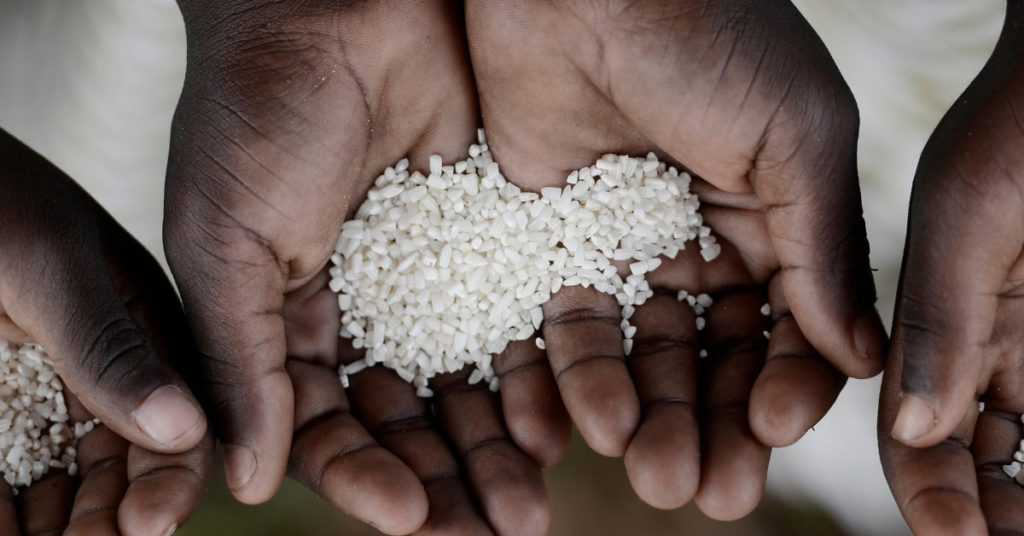Malnutrition is usually referred to as ‘poor nutrition’; it indicates that your diet has an insufficient amount of nutrients. It is a severe disease and is common in developing countries like Pakistan. The problem of malnutrition in Pakistan and its symptoms have been explained in this article.
Malnutrition in Pakistan


Malnutrition in Pakistan has been on the rise for many years. According to the National Nutrition Survey findings conducted in 2018, 40.2% of children under five years have stunted growth, and 29.8% are underweight. There is also a high prevalence of being overweight and wasting among this age group. Malnutrition can be a deathly disease if it is not treated within time. It is highly recommended to visit a doctor if you see any of the symptoms of malnutrition given below. You can consult with the best doctors in the Top Hospitals of Pakistan online.
Types of Malnutrition
There are two main categories of malnutrition that can lead to different diseases and disorders:
Undernutrition
‘8 out of 10 children in Pakistan do not eat the right type and quantity of food.’ –UNICEF.
Undernutrition is a condition that results when the body is not getting the amount of nutrients it requires. The most common cause of undernutrition is the absence of different food groups in a person’s diet. The World Health Organization (WHO) has found that 45% of children’s deaths are associated with undernutrition.
This condition leads to a state of mineral and vitamin deficiency in the body which can cause many serious diseases if proper nutrition is not administered.
Symptoms of Undernutrition
These are some of the common symptoms of undernutrition. You should identify these in yourself or your child and consult with a doctor as soon as possible.
- Constant fatigue
- Concentration problems
- Sudden and severe weight loss
- Irritability
- Anxiety and depression
- Fat and muscle mass loss
- Sunken eyes
- Hollow cheeks
- A bloated stomach
- Dry and rough skin
- Dry and brittle hair
Problems Caused by Undernutrition


Undernutrition in childhood can cause the following problems:
Stunted Growth
According to UNICEF, you will be surprised to know that around 10 million children in Pakistan have stunted growth. This means stunting is one of the most common diseases in children of Pakistan. Stunting is a condition in which a child cannot grow to the proper height according to their age. In most cases, it occurs during the 1000 days from conception to when the child turns 2.
Risk Factors for Stunting in Children
- Poor diet: Your child might not be able to grow at a healthy rate if their diet is not well-balanced. All the food groups are included in a well-balanced diet, including cereals, dairy products, proteins, fruits, vegetables, and fats.
- Quantity and Quality of diet: Stunting can also occur if the food is available, but your child is not eating the right amount recommended for their age. The quality is also essential, meaning the food must be well-prepared, fresh, and safe to eat.
- Malnutrition in Mother during pregnancy: If the mother cannot get all the essential nutrients when she is pregnant, the baby might also suffer from deficiencies. It results in improper growth and development of the child in later years.
Wasting


Wasting means having low weight for your height, and it usually develops undernourished children before the age of five. Wasting in Pakistani children is quite common and usually occurs with stunted growth. It indicates recent and severe weight loss. Wasting happens if you haven’t had a good diet or have been sick for a prolonged time. If it is not appropriately treated, it can result in a higher risk of death among children.
Underweight
Being underweight means that you have low weight according to your age. It means that children with low weight are more at risk of being underdeveloped and might easily get infected with the disease. If a child is underweight, they might have stunted growth and wasting as well.
Micronutrient Deficiencies
If you are underweight, it is highly likely that you have micronutrient deficiencies caused by a lack of vitamins and minerals. These nutrients are required for body functions, such as the production of enzymes, hormones, and other substances, as are necessary for growth and development.
Some of the prevalent micronutrient deficiencies found in children under five years through the recent Nutrition Survey of Pakistan are:
- Iron deficiency anemia: 28.6%
- Zinc deficiency: 18.6%
- Vitamin D deficiency: 62.7%
- Vitamin A deficiency: 51.5%
Overnutrition
The other type of malnutrition is overnutrition. It happens when you consume more than the required amount of nutrients, leading to obesity and overweight. Before the last few decades, undernutrition was considered a problem for people living in developed countries. However, now it has become prevalent even in countries like Pakistan. The ratio of overweight children under five years is 9.5%.
Problems Caused by Overnutrition


Overweight
A maintaining a healthy weight is all about consuming the amount of calories your body needs. When you take excess calories, they are stored in the form of fat in the body; this results in weight gain. You can become overweight if your Body Mass Index (BMI) ranges from 25.0 to 29.9.
Obesity and related Diseases
Obesity is one of the world’s most serious health problems; a BMI of 30 or more indicates that you are obese. A study showed that 1 in 4 people in Pakistan over 15 years is overweight or obese. It is linked to a group of related conditions known as metabolic syndrome. An unhealthy lipid profile, high blood pressure, and high blood sugar are examples. Metabolic syndrome increases the risk of heart disease and Type 2 diabetes much more than normal weight.
The Bottom Line
Malnutrition and stunted growth in Pakistan have been on the rise for many years, especially among children under the age of five. Undernourished people may experience weight loss, fatigue, and mood swings, as well as vitamin and mineral deficiencies. While, overnutrition can result in obesity, overweight, and insufficient micronutrient intakes and deficiencies. Identifying these problems within time is necessary because they can be fatal. Visiting a doctor after noticing symptoms of malnutrition is highly recommended.
FAQs
1. What are the causes of malnutrition in Pakistan?
The common causes of malnutrition in the Pakistani population include unawareness, poverty, overpopulation, political instability, food stock losses due to natural disasters, or harvesting problems.
2. What are common nutritional deficiencies in Pakistan?
Some of the common nutritional deficiencies in Pakistan are iron, calcium, zinc, and Vitamin A and D.
3. How many children are stunted in Pakistan?
According to UNICEF, around 10 million children in Pakistan have stunted growth.
4. How do I know if I’m malnourished?
You can see if you are malnourished by checking its signs and symptoms like stunting, wasting, underweight, overweight or obese.
Book an appointment now, to answer all your queries. You can book an appointment with the top General Physicians in Pakistan through Marham by calling at Marham helpline: 0311-1222398 or by online booking facility through the website or Marham mobile app.
Can’t Find The App?
Android Users:
https://play.google.com/store/apps/details?id=controllers.marham.marhammed&hl=en
Drop a review for us at Playstore if you’ve had a good experience!
iPhone Users:
https://apps.apple.com/pk/app/marham-find-a-doctor/id1095243102
Stay Home. Stay Safe!

